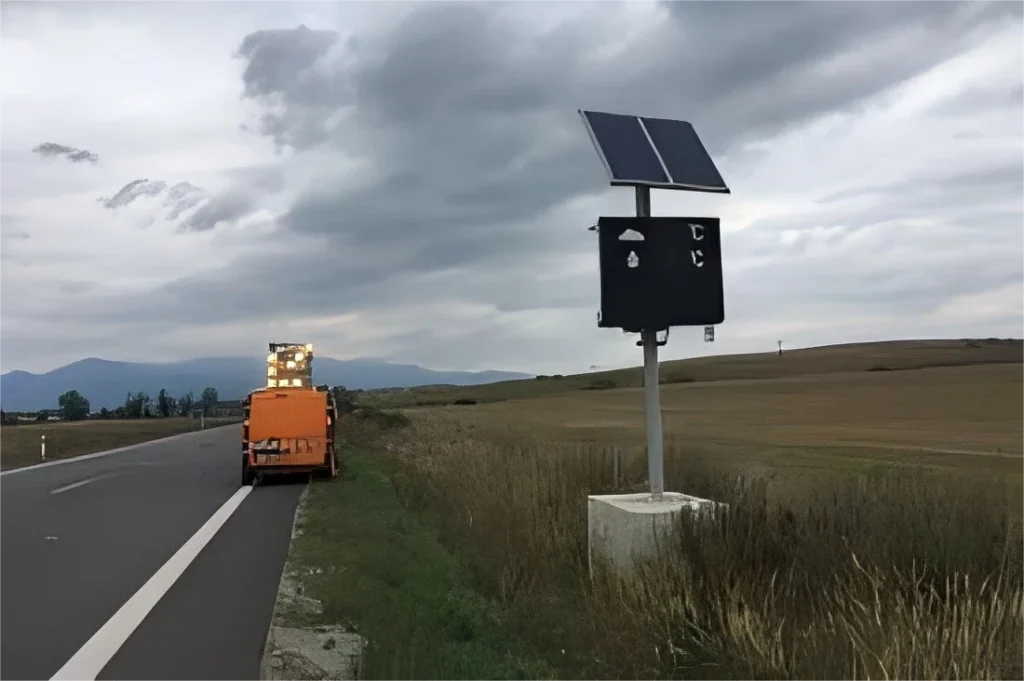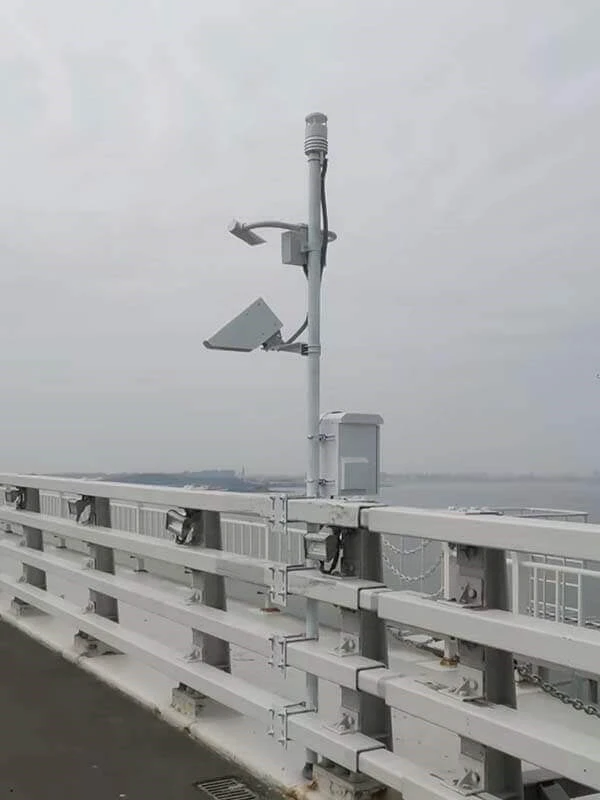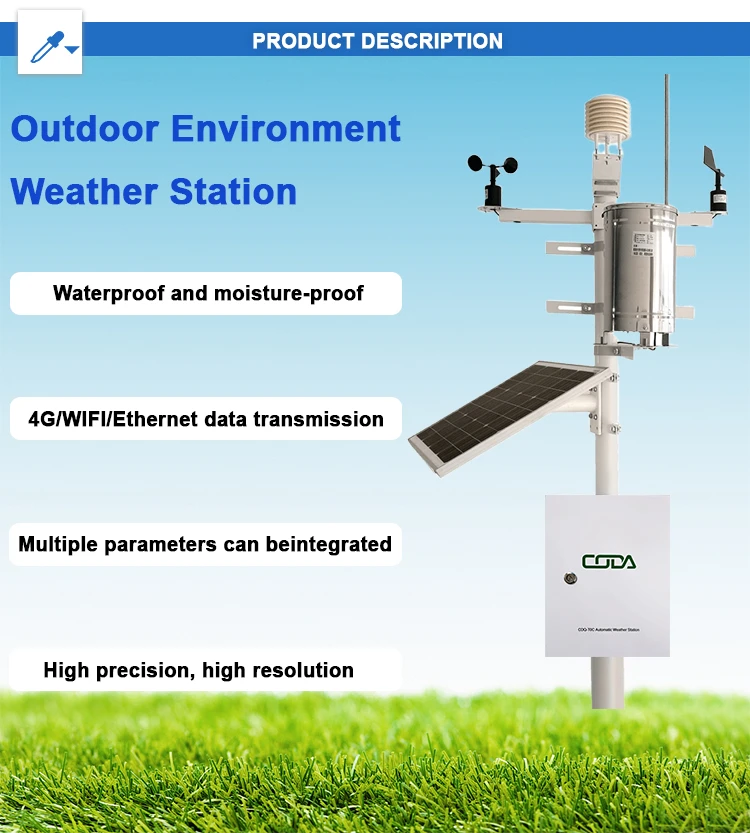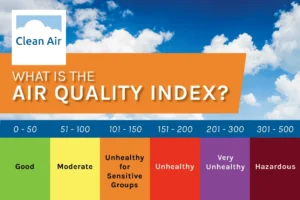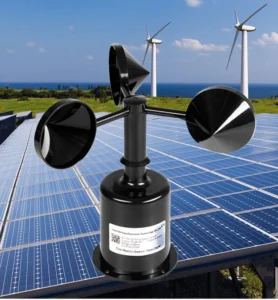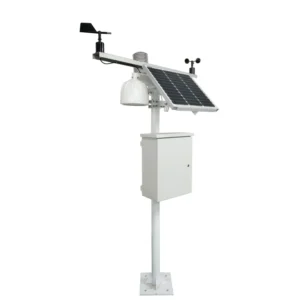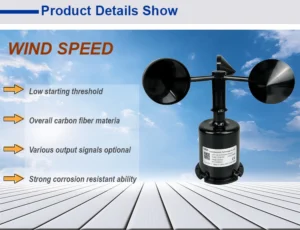Highway Weather Monitoring Stations: Enhancing Safety and Enabling Smooth Travel
Introduction
Highway weather monitoring stations play a vital role in modern transportation systems. These setups gather real-time weather data from highways. They are important for keeping roads safe and traffic flowing smoothly.
These systems provide accurate and timely weather updates. This helps transportation agencies, emergency services, and drivers make better choices. These choices improve safety and reduce problems.
Components of Highway Weather Monitoring Stations
Meteorological Sensors
**Temperature Sensors**
Thermistors are the main devices used to measure air temperature in highway weather stations. These sensors are made of semiconductors.
They change their electrical resistance when the temperature changes. As the temperature changes, the thermistor’s resistance changes too. The system then turns this change into an electrical signal.
The station’s data acquisition system processes this information to create accurate temperature readings. Accurate temperature data is very important. Extremely low temperatures can cause ice to form on roads. On the other hand, high heat can affect how well vehicle engines work and how tires perform.
**Humidity Sensors**
Capacitive humidity sensors are often used to measure relative humidity. They have two electrodes that are separated by a material that absorbs water vapor.
This material takes in moisture from the air. The change in capacitance between the electrodes is measured. This change helps to find out the humidity levels.
High humidity, especially with low temperatures, increases the chance of fog and black ice. This can make driving on highways very dangerous.
**Precipitation Sensors**
Tipping-bucket rain gauges are common tools for measuring rain. These devices catch rain using a funnel and direct it into a small bucket. When the bucket gets too heavy, it tips over and sends an electrical signal. The station then records this signal.
By counting these signals over time, the system measures total rainfall. In colder areas, ultrasonic or weighing sensors help measure snowfall.
Precipitation data helps us check if roads are wet and predict risks like hydroplaning. Hydroplaning happens when water forms a thin layer between the tires and the road. This makes it hard to control the vehicle.
**Wind Sensors**
Wind speed and direction are measured by anemometers and wind vanes. Cup anemometers are popular for highway use. They measure wind speed by how wind spins a series of cups on the device.
This motion is recorded to find average wind speeds. Wind vanes have flat, arrow-like shapes on a vertical rod. They can move freely with the wind.
Strong winds can make vehicles hard to control, especially big trucks and buses. They can also create danger by blowing snow or debris onto the road.
**Road Surface Sensors**
**Road Temperature Sensors**
These sensors are put on or near the road surface. They are often made as thermocouples or resistance temperature detectors (RTDs).
Thermocouples create a voltage that matches the temperature difference between two junctions. One junction is in contact with the road surface. RTDs change their electrical resistance when the temperature changes.
Monitoring the road’s surface temperature is important. It can change a lot compared to the air temperature, especially on sunny or cold days. For example, on a cold night, the road surface can cool faster than the air. This can cause ice to form, even if the air temperature is just above freezing.
**Road Surface Condition Sensors**
Advanced highway weather stations often use infrared sensors. These sensors can detect moisture, ice, or snow on the road. They analyze the infrared radiation that the road emits. They also measure the strength and wavelength of this radiation.
Different surfaces, such as dry roads, wet roads, ice, or snow, reflect infrared radiation in different ways. This helps sensors identify road conditions accurately. Some systems also use sensors to measure how much grip the road has.
This information is important for drivers. It shows how well their tires will grip the road, especially in bad weather.
Applications and Benefits of Highway Weather Monitoring Stations
**Safety for Motorists**
**Early Warning Systems:**
Highway weather monitoring stations give important data for early warning systems. For example, when road temperatures drop below a certain level and humidity is high, alerts can be sent out. These alerts can come through variable message signs (VMS), radio broadcasts, or mobile apps.
These warnings tell drivers about icy or slippery roads. They encourage drivers to be safer by slowing down and keeping more distance between cars.
**Emergency Response:**
During bad weather, like heavy snow, flash floods, or strong winds, emergency responders need up-to-date information. They rely on these stations for that information. Data on precipitation rates, wind speeds, and road conditions aids in coordinating rescue and recovery efforts.
If a flash flood is coming, responders can look at areas where water levels are rising. This is especially important on the highway. They can prioritize sections that are likely to be most affected based on rainfall data.
—
**Traffic Management**
**Dynamic Speed Limits:**
Weather data helps transportation agencies set changing speed limits. When bad weather happens, like heavy rain or strong winds, speed limits can be changed quickly.
For example, if wind speeds get high enough to affect vehicle stability, lower speed limits can be shown on signs. This method helps keep traffic moving smoothly and lowers the risk of accidents.
**Snow and Ice Control:**
Road maintenance teams use data from highway weather stations to improve snow and ice removal. They need information about road surface temperatures, types and amounts of precipitation, and wind conditions. This data helps them decide when to use de-icing agents or salt.
If freezing temperatures and snow are expected, we can treat the roads in advance. This helps stop ice from forming. This smart method improves safety and saves money by using resources wisely.
**Research and Planning**
**Infrastructure Design and Maintenance:**
The data from these stations is important for planning and keeping infrastructure in good shape. Engineers can see how weather affects roads. It is important to study how temperature changes, rainfall, and road wear work together.
This research can help us make stronger materials. It can also improve drainage systems. This data helps us plan maintenance, like resurfacing, based on how weather affects road conditions.
**Climate Change Studies:**
Highway weather monitoring stations are important for climate research. They track weather conditions along highways continuously. This gives us valuable information about long-term climate trends.
We can look at changes in temperature, rainfall, and extreme weather over time. This information helps us predict future problems for highways because of climate change. It also helps us create plans to adapt transportation systems to new environmental conditions.
conclusion
In summary, highway weather monitoring stations are important for safe and efficient travel on roads. They use different tools and methods to provide vital information for drivers, transportation officials, and researchers.
While challenges such as sensor calibration, data integration, and maintenance persist, continuous technological innovation and improved methodologies are steadily bolstering the reliability and capabilities of these systems.
